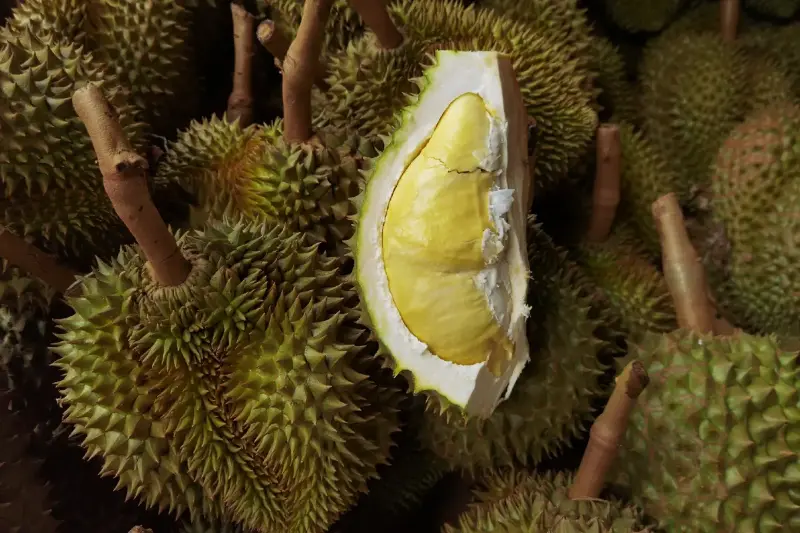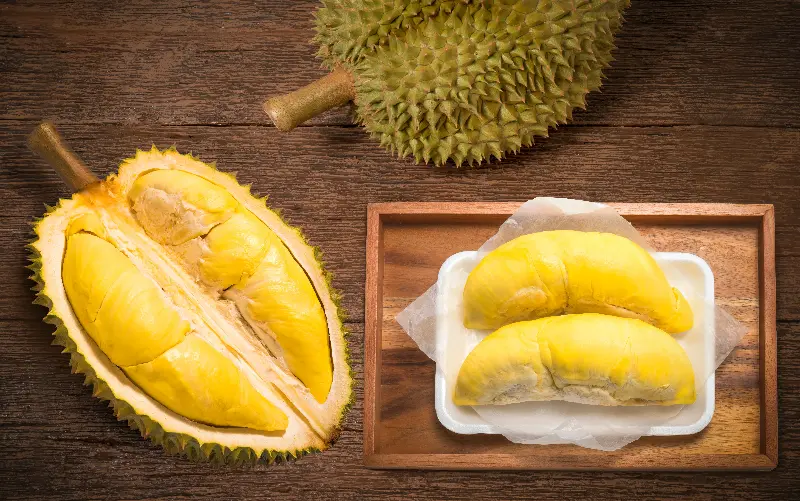Few fruits ignite as much passion, controversy, and curiosity as durian, fondly and famously called the “king of fruits” in much of Asia. With its formidable thorn-covered husk, custard-like flesh, and an aroma that’s as divisive as it is legendary, durian is more than just food—it’s an experience, a cultural icon, and, for many, a forbidden delight. From bustling markets in Thailand and Malaysia to gourmet restaurants in Singapore, durian’s impact on Asia’s food culture is as unmistakable as its unforgettable scent.

An Introduction To The King Of Fruits
Durian has been cultivated and enjoyed for centuries across Southeast Asia, particularly in countries such as Thailand, Malaysia, Indonesia, and the Philippines. The fruit grows best in tropical climates, dangling from very tall trees that can reach impressive heights of up to 50 metres. Often weighing between 1 to 3 kilograms, the durian’s green or brown outer shell is covered with menacing spikes that serve as natural armour.
Yet what truly defines durian is its inner flesh—a creamy, golden to pale yellow pulp that is powerfully aromatic, rich, and sweet, with hints of almond, cheese, onion, and even garlic. This contradictory blend gives rise to durian’s reputation as an intense, one-of-a-kind delicacy. As Anthony Bourdain once described it, “Your breath will smell as if you'd been French-kissing your dead grandmother.”

A Divisive Aroma And Global Intrigue
The scent of durian is both its curse and its calling card. For devotees, the smell is tantalising and alluring—a promise of gastronomic pleasure. For detractors, however, it’s notoriously pungent and can evoke comparisons to rotten onions, gym socks, or even raw sewage. Many airports, hotels, and public transport systems across Southeast Asia explicitly ban durians to avoid offending passersby and unsuspecting guests.
Despite—or perhaps because of—its controversial aroma, durian has developed an almost cult-like following. Food tourists and adventurous locals alike often seek out durian simply to say they’ve tried it. Social media is filled with tales of foreigners braving their first bite, with reactions ranging from sheer delight to comical disgust.
In recent years, the global appeal has grown, with frozen durians now exported as far as the United States, Australia, and Europe. Yet, nothing quite compares to sampling the fruit fresh in its native region, surrounded by enthusiastic locals eager to share their own reverence (or revulsion).

Culinary Versatility And Festive Celebrations
Durian is not just eaten fresh from the husk; it’s a remarkably versatile ingredient. Across Asia, you’ll find it incorporated into cakes, pastries, ice creams, candies, and even savoury dishes. Malaysia’s beloved “durian cendol” sweetens shaved ice with thick durian puree, while Thailand’s “durian sticky rice” pairs the fruit with glutinous rice and coconut cream.
Each year, entire festivals are dedicated to the king of fruits. In parts of Malaysia and Thailand, visitors flock to durian farms during the peak season—from June to August—to participate in all-you-can-eat durian buffets. Regional competitions crown the “best” durians based on size, aroma, and flavour, reflecting local pride in unique varieties such as Musang King or Monthong.
